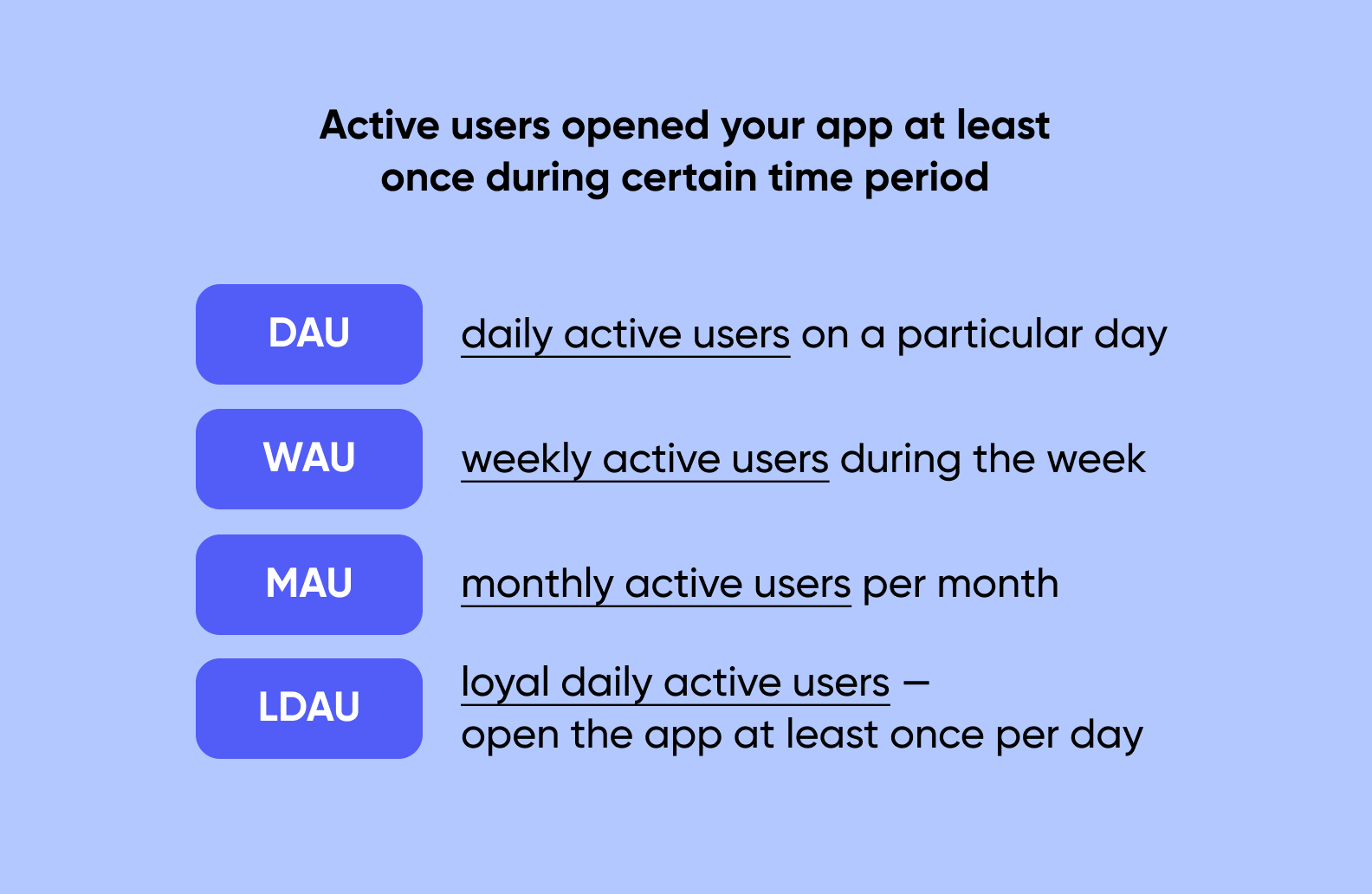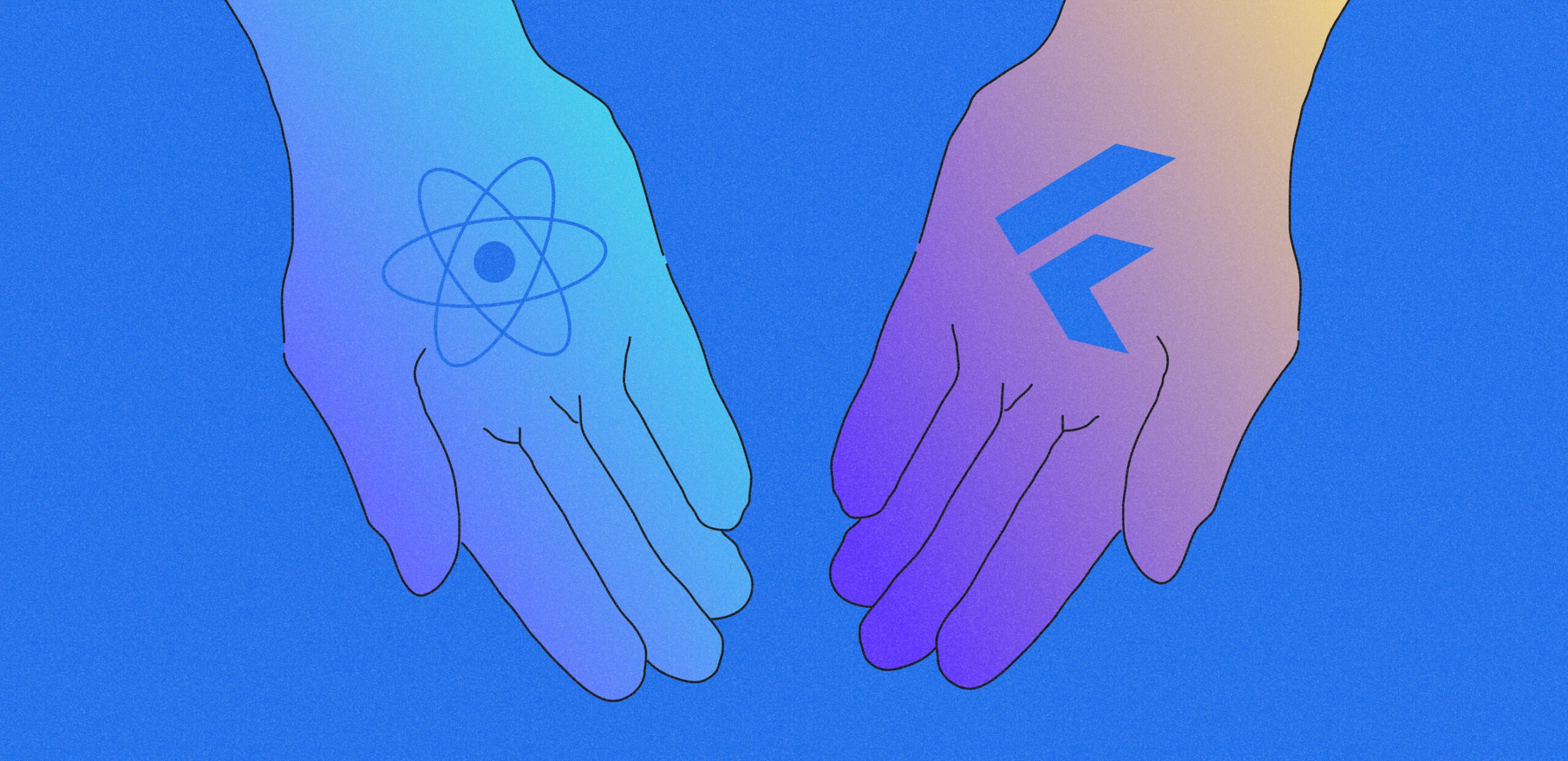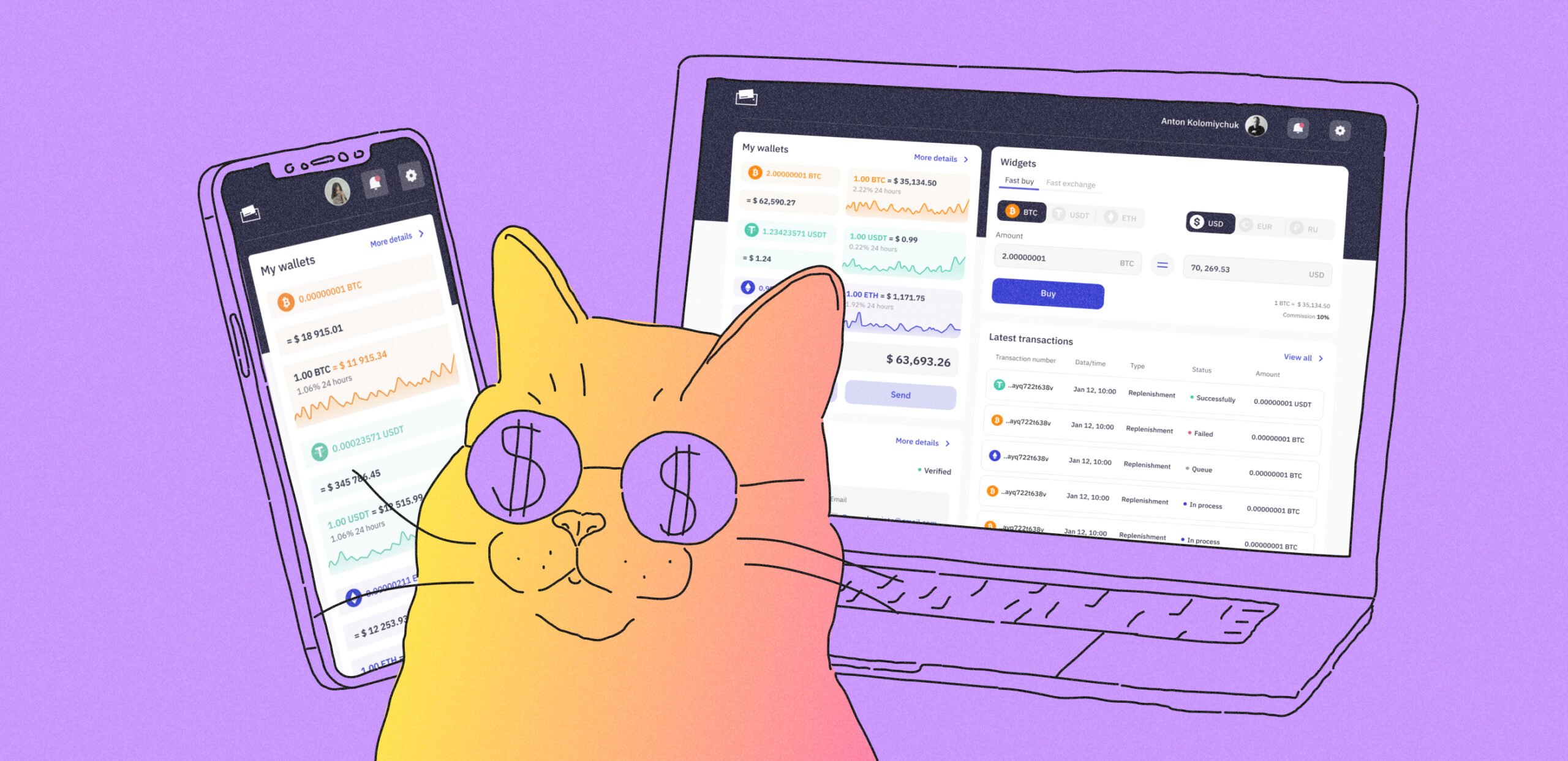What to do with your idea?
Indeed, competition in the app market is very high. When there were far fewer apps, it was possible to come to the market and find demand for your mobile app idea. Now though, many ideas have already been realized, and people have become more picky.
You can just blindly implement your idea, hoping that it will become successful. But the chances of achieving great results can be low. Or you can do your homework and increase your chances of avoiding failure. Our article will give you a step-by-step methodology on how you can develop an app that can compete with other apps in your niche.
At Purrweb we are well versed in mobile app development and we are here to help you. In this step-by-step guide we walk through what to do with an app idea. Follow the steps and let’s make your app idea come true together!
Step 1. Evaluate your possibilities
Before diving into the process of mobile app development process, are you ready to make the app a reality? Answering the following questions is the easiest way to do it.
1. How much time are you ready to spare to develop an app?
2. Should this app become the business of your life or remain just a side job?
3. How much money do you have to hire developers?
4. Is the idea worth the time and money?
Step 2. Research the market
If you have a mobile app idea, to set the ball rolling the next thing is to do proper market research. Actually, this is the most important stage of the process because it will define all the following ones. A great app idea without appropriate investigation, development and marketing strategy is of no use and is destined to be an uphill battle.
But where to start? If you have an app idea, a good place to begin is with competitor analysis. Scroll down to learn the ways to do it.
Analyze your competitors
The next thing to work on is an analysis of existing apps which are similar to your mobile app idea. More than likely, someone has already launched such an app and market research will help you learn from their mistakes. Moreover, the apps market is highly competitive — you have to understand what you are going to deal with before diving into it. A proper competitor analysis increases the chances of developing a successful app.
💡Let us put forward a tip: choose the top-5 applications that are most similar to your idea for an app and study them thoroughly.
You can apply a SWOT analysis to specify strengths, weaknesses, opportunities, and threats of your competitors if you are familiar with the method, or you can follow a plan below.
-
- UVP: what kinds of unique value propositions your competitors use.
- UI/UX design: estimate the visual attractiveness and convenience of user interface, pay attention to original graphical elements, and the technologies put to use.
- Disadvantages: define the negative sides of your competitors’ apps — the flaws, bugs and inconveniences can give you a clue on what to improve in your own application.
- User acquisition channels: determine the target audience of each app under analysis, study the traffic sources, examine the marketing campaigns.
- Sources of revenue: you have to think through ways to make money from the app. It’s vital for your project, even if it’s free, you will need money to provide technical support for your app. So identify your competitors’ monetization model, free and paid features.
- Reviews and ratings: look through user reviews — they can give you some hints to make your future app more popular with users.
To deepen your understanding of the role of market research in mobile app development — read our article.
Step 3. Create a business concept
You’ve completed the market research, so now in order to sell an app idea to investors in the future it’s the time to solidify your business concept. You can find a plan on how to do it below.
Target user
The first thing to do is to describe a portrait of your target user: define his or her age, the place your target user lives in, their job, hobbies, what your target user wants to achieve by using your app.
Keep in mind that your target active user may be different from your target paying user. It depends on your app concept. Target active users may love your app, leave tons of comments and likes, but won’t buy anything. Target paying users are the ones who bring you revenue.
For example, if you make a game app for children of 8-10 years old — they will be your target audience. But the ones who actually pay for the app are their parents. Try to describe both categories of target users.
App features
The second thing to do when you have an app idea is to outline your app features. List all app features and categorize them into crucial ones that you need to develop first and extra features you can add later.
You can use the MoSCoW method to prioritize. This method allows you to divide all the features into 4 categories: Must have, Should have, Could have and Won’t have. Read more about this method in our article.
Unique value proposition (UVP)
Why should your target user choose your application out of all the others? What separates your app from the rest? The answer to these questions will be your unique value proposition (UVP). It will help you to define your marketing strategy in the future and will attract users to perform in-app actions.
Monetization strategy
You already know how your competitors earn from their apps, now it’s your turn to think your monetization model through. It’s an important point, especially if you want to attract investors to the project. There are a few ways to monetize an app:
-
- Download fee. This model suits premium software the most.
- Third-party ads. Receive income for the displayed third-party ads (PPI — pay per impression), for the users’ clicks on the ads (PPC — pay per click) or for each download of a third-party app (PPD — payment per download).
- Freemium. Make some features of your app free and add some extra features, which will cost money to activate.
- Subscription. You can offer different subscription plans if you have interesting content.
You can combine the models or adopt them separately.
Step 4. Find investments
Mobile app development, deployment and promotion costs a lot. So it’s a common situation that a person who comes up with the idea doesn’t have the funds to launch a mobile app. If your personal savings don’t cover the costs, don’t worry — you are not alone. There are various possibilities for startups to raise funds:
-
- Accelerators. You can participate in a startup contest or another event for startups. Investors often hold them. It’s likely that you will get the necessary funds if you have a promising mobile app idea.
- Crowdfunding platforms. The idea of crowdfunding platforms like Kickstarter is that you can interact with users and ask them to fund your future application. If they like your idea you can get the sum you need. The problem is that you have to give your backers a reward: the early bird download of your app, extra online courses, e-books or hardcopy books, T-shirts, or even your personal help in something useful for your target backers.
- Angel investors. Sometimes wealthy individuals can help you with seed capital in exchange for ownership shares if they like your idea. They can even support the entire project if you can prove that you have a reasonable plan and can really make your great app idea come true.
- Venture companies. Maybe one of the fastest ways to launch your app. Venture companies give money in exchange for the project shares. That’s why they try to ensure the return on their investment as quickly as possible.
- Private companies. A big app development company may buy a promising app if they want to be present in the niche.
- Bank credit. If you have a well-thought business plan for an Android or iOS application, there’s a chance that a bank can give you the necessary sum of money.
Step 5. Choose mobile app developers
When it comes to design and app development, there comes the question of choosing between freelance, in-house or outsource developers. Let’s see which purpose each variant suits the most.
Freelance is perfect for small short term tasks when one or two specialists can handle them. For more complex development projects which are too difficult for a smaller crew it’s better to choose a team of in-house or outsource developers.
For long-term projects and for apps on the post-release stage it’s rational to gather an in-house team development team. And if you already have a team of developers who can handle this task, why not? Give the task of mobile app development to them.
But in case you are at the very beginning of your business and don’t have a mobile app development team in your company, or if the things you need to do are too complicated for your in-house specialists or if you lack one or two specialists in the development team you can choose the outsourcing model.
By the way, here at Purrweb we work as an outsourcing company with over 200 IT-specialists on board. We see that it’s the most beneficial form of cooperation for startupers, because by choosing to outsource you can save money on in-house specialists.
Step 6. Outline your marketing strategy
Promoting your app before and after its release is important to establish a brand presence and attract users. Effective promotion can significantly impact the success of your app by increasing its visibility in a competitive market.
We’ll consider both paid and free methods:
| Free methods | Paid methods |
| Social media | Social media ads |
| Community engagement | Partnerships |
| App store optimization (ASO) | PR company |
Free methods are not as numerous as the paid ones, but they can still be equally beneficial if used properly. Let’s look at the main ones:
Social media. It can be a good idea to start creating your app presence in social media even before your app is actually ready. Use popular platforms like Instagram, X (ex. Twitter), and LinkedIn to post engaging content. Share updates, teasers, and interesting facts about the app development process. Exclusive content can interest people, and they will likely want to try your app.
Community engagement. Participate in forum discussions related to the app’s niche. This way, you can tell more people about your product and engage with potential users.
App store optimization (ASO). Before deploying your app to the app stores you have to investigate the principles of ASO. It will help you to make your app visible in app stores and to increase conversion. Use relevant words in the app title and description, add attractive icons and screenshots to get more downloads from the app store search.
Now, let’s learn more about the paid methods:
Social media ads. It is a fast way to promote your app to a wider audience. Platforms like Instagram, X (ex. Twitter), and Facebook use advanced targeting options based on users’ age, interests, and behaviors. This means that there’s a higher chance of reaching your target users.
Partnerships. Collaborate with influencers and bloggers from the same niche. Having dedicated audiences, they can advertise your app to their followers, which increases the chances to gain more users. You can also offer discounts or promo codes to your partner’s audience.
PR company. Hiring a PR agency to promote your app is a costly option, but one of the most effective. It’s crucial to find an experienced company that will come up with a good promotion strategy. Their responsibilities include creating press releases, building relationships with mass media, organizing events, and so on. The PR team can help you increase brand recognition and build a positive image.
Choose promotional methods that suit your budget. Don’t spend all of your money on promotion, as the released app will require maintenance and bug fixes to provide a smooth user experience.
Step 7. Build an MVP
It’s time to make your app idea come true, by developing an MVP. Minimum viable product (MVP) is the version of your app which provides only crucial features. An MVP can be used to:
-
- check the viability of your app idea;
- get early adopters and receive important feedback;
- give you a clear vision of your target audience;
- keep down development time and costs;
- bring in revenue before launching a full app;
- attract bigger investors.
Step 8. Deploy MVP to the app stores
The deployment process can be complicated if you try to accomplish it yourself. It’s better to hire experienced developers to make your app: they can facilitate this task for you.
1. The first thing you have to do is to create a developer’s account in each app market.
2. The second step is to read through the deployment guidelines and to check that your app follows all the rules. They are different for the App Store and Google Play. If there’s a discrepancy, there’s a risk that the app stores will not approve your application.
3. Test your app thoroughly before publication. Check that the app works as expected.
4. Publish your app. Deploying to the Google Play store normally takes about 2-3 days. Apple’s review process isn’t that fast, because they analyze each app separately.
We have plenty of experience here. Check out our detailed guide on how to deploy a mobile app.
Step 9. Measure success with mobile app metrics
You have launched your app and some users have tried it. How to measure success? The process with mobile apps is usually like this: people download an app, use it and (if they don’t like it) delete the app. But if users do like it they use it more frequently and become ready to buy a subscription or make an in-app purchase.
User engagement
You can measure user engagement with 2 metrics:
-
- New users per day. This figure shows the popularity of your app with new users: it’s the result of your marketing strategy in the app stores. Later you can track how many of these people stay with you and for which amount of time.
- Total users. You can track the total number of users to see if it is growing or not.
User retention
The percentage of users who return to your app after the first opening is user retention metrics. We can count it in different ways according to the time periods: 1-day retention, 7-day retention, 28-day retention. In these cases we count the users who opened your app on the 1st, 7th and 28th days after installation of your app.
There’s a similar metric which is called “rolling retention”. For example, 7 day rolling retention means that the user has opened the app at least once within the 7 days since installation.
User activity rates
You can use several user activity metrics to measure the activity of your regular users — DAU, WAU, MAU, LDAU. What do these abbreviations mean?
Monetization indicators
The most important monetization metrics are the following.
-
- Paying users — the number of unique users who have made at least one transaction during a set period of time.
- Average revenue per user (ARPU) — total app revenue divided by the total number of users over a set period of time.
- Average revenue per paying user (ARPPU) — total app revenue, divided by the number of paying users over a period of time.
- Lifetime value (LTV) — a complex metric which shows how much profit an average user brings over the lifetime of using your app. It can include ARPU.
You can choose the most relevant metrics for your app or track all of them. The measurement results and users’ feedback can be a guideline for the future improvements of your application.
For example, dating app market reached $4.94 billion of revenue in 2022, making it one of the most profitable businesses these days. And the market is expected to keep growing. To create revenue, the majority of dating apps implement the paid subscription strategy. Check out our article if you want to learn more about dating app development and its monetization strategies.
Step 10. Post launch activity
Users are unlikely to be interested in downloading an app that has low ratings and hasn’t been updated for a long time. Once the app is released in the app stores, you need to keep working on it to ensure its success and smooth performance. During the post-release period, it is important to pay attention to aspects such as app support, user reviews, and scaling. We are going to look at each of these in more detail below.
App maintenance
The world of technology doesn’t stand still, so constant maintenance and improvement of your app play a crucial role in its success. There are three main reasons why you need to keep your app up-to-date:
-
- Regular updates. This includes fixing bugs to ensure the app runs smoothly. It also includes improving existing features and adding new ones to make the app meet user needs.
- Technological compatibility. Technologies change over time, so it is necessary to adapt and adjust the product depending on the emergence of new devices, hardware, and third-party services.
- Security. To protect user data from cyber attacks and data leaks, it is necessary to maintain the safety of the application and update security protocols.
User feedback
It is important to listen to your users. Satisfied users will not consider deleting your app. Their feedback can help you highlight the weak and strong points of the product. You will be able to determine how satisfied users are with the app’s performance and functionality. Users can point out bugs left unnoticed during the testing or problems they encounter most often.
You can monitor reviews in app stores and on forums like Reddit and Quora. It is a good idea to create regular surveys and polls. Instead of sending out an email newsletter, it will be more effective to implement a review system in the app itself. This increases the chances that users will be more willing to leave feedback. You can also offer small rewards for writing a review to motivate users to leave feedback more actively.
App scaling
As your user base grows and the demand for your app increases, the need to support a higher number of users and more data becomes crucial. There are two main types of scaling:
-
- Vertical scaling. It involves increasing the capacity of a single server or resource to handle a higher load. This means upgrading the existing hardware by adding more powerful components, such as increasing CPU power, RAM, or storage capacity.
- Horizontal scaling. It entails increasing the size of an application by adding more servers to distribute the load. Here, the workload is divided among multiple servers, each of which handles a part of the overall traffic.
It’s not necessary to use only one method, you can implement a hybrid system. This ensures that your app will remain responsive, reliable, and capable of handling increased loads as it continues to grow in popularity.
Ready to bring your idea to life?
Now, when you’ve read our step-by-step guide, you probably realize what to do if you have an idea for an app. Of course, creating a successful app isn’t a simple matter. But in case you need help — at Purrweb we are a well versed team of more than 190 highly motivated IT-specialists and we are ready to simplify the process for you. We can evaluate your idea, design your app interface, develop, deploy the application and add extra features for your app if you need them. So don’t hesitate, we can’t wait to make your app come true!















